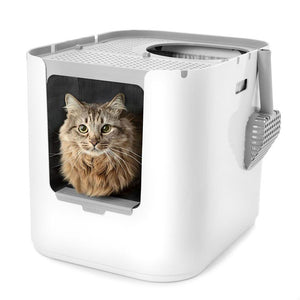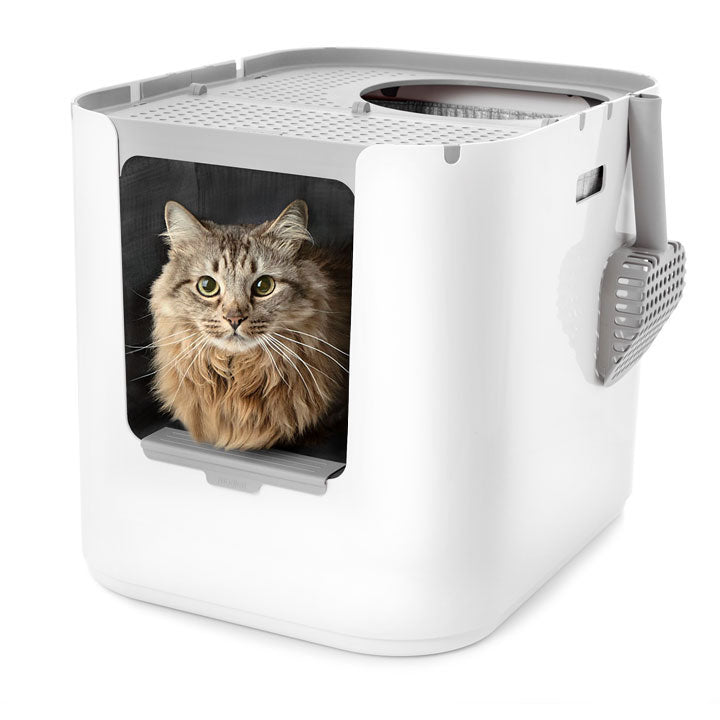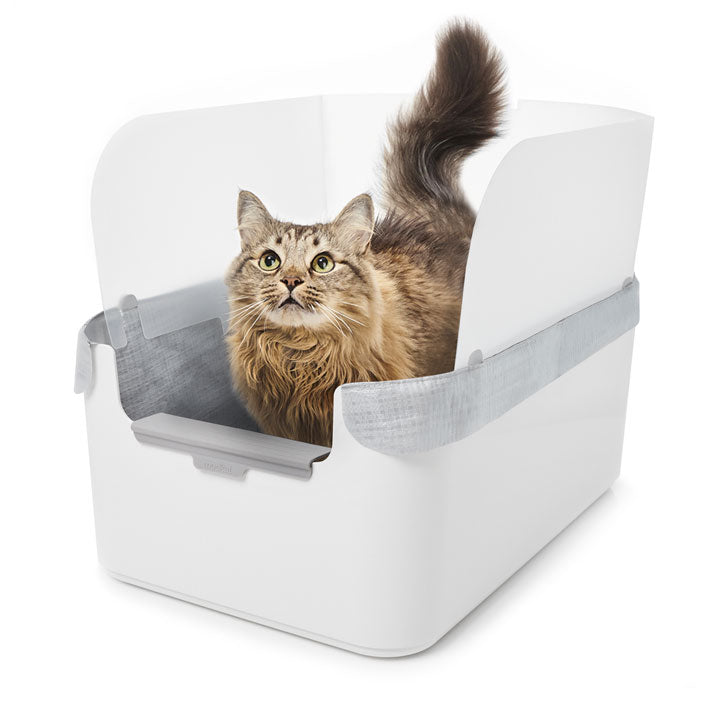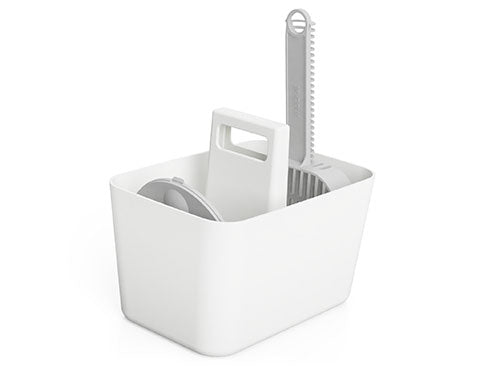Litter Boxes
Accessories
Liners
7 tips for leash training your cat.

If your cat is carefree, adventurous, fairly calm, and not easily frightened, you may have the ideal candidate for a leash-trained feline. Leash training your cat adds another level of adventure to your cat’s experience and creates another way for you to bond with your four-legged friend.
Leash training, however, takes persistence, patience, and the right accessories for a successful endeavor. It’s always easier to train your furry friend as a kitten, but it’s not impossible to train an older cat. Keep in mind, though, some cats just aren’t cut out for walking on a leash, especially if they are skittish, easily distracted, or high strung. And if you live in a busy downtown area, venturing outside may not be the best form of activity for your cat. The environment is as important as having the proper accessories for a successful outdoor experience.
Here are seven tips for leash training your cat:
1. Gather the right accessories
Purchase an H-type harness, which fits your cat across the shoulders and under its tummy. This type of harness doesn’t put pressure on the neck, which can annoy your kitty, plus it won’t interfere with his ID tags. Harnesses are usually sold with a leash as a set, but if not, aim for a 4- to 6-foot leash.
During the training period, you’ll also need treats to reward your kitty’s every success.
2. Introducing the harness/leash
Leave the harness near your cat’s food or water dish to allow him to sniff it and investigate it. Watch how he interacts with the accessory and reward with a treat. That way he’ll associate the harness with a positive response. Before you ever place it on the cat, practice snapping the clasps so he gets used to the sound of it.
When you feel your cat is ready, slip on the harness without fastening it. Do this multiple times over the course of a few days to ensure your cat is comfortable with the new device. Reward your kitty each time he plays nice with the harness. Move on to fastening the harness once he’s used to the idea of it being on him.
Once your cat seems OK with the harness, attach the leash. You can either try letting your cat drag around the leash or if he seems alarmed by the attached leash, hold it while he wanders around the house. Be sure to reward him during this process as well so he associates the action with something positive.
3. Venturing outdoors
The best place to begin your outdoor adventure with your kitty is in your own backyard. Always carry your cat through the door and outside, which will reduce the risk of her darting out on her own without a leash when the door is opened. For the first few times, consider leaving the door open should your cat become freaked out and want to make a mad dash for the door.
Cats are more inclined to sniff around, stretch out in the sun, or choose a spot under a bush rather than go for a brisk walk. Be your cat’s sidekick and go at your cat’s pace. It will be a happier experience for both of you.
4. Consider microchipping your cat
Heaven forbid your cat ever escape while you’re out walking. But having her microchipped will give you peace of mind in the event your cat does slip away from you. This device provides permanent identification and can quickly reunite you with your cat if he’s transported to a shelter or vet.
5. Get up-to-date
Be sure your cat is up to date on her vaccinations and is receiving flea and tick preventative care before venturing outdoors.
6. Keep your cat safe
Avoid exposing your cat to harmful pesticides, herbicides, or poisonous plants that may be lurking outdoors in your environment. Keep a close eye on your kitty while outside and do not let him eat anything during your outings. Instead, bring along treats.
7. Give a good brushing
After your walk with kitty, give her a good brushing to remove any dirt or bugs that may have collected on your cat’s belly and reward with a treat.
An indoor cat will most certainly find an outdoor experience refreshing with opportunities to chase bugs, watch birds, roll around in the grass, pounce on flittering leaves, climb, investigate, and socialize. Walking outside with your kitty also opens up the world of new sights and smells, enhances physical activity and alleviates boredom-related behavior.
If you’re looking to groom your kitty to be your loyal walking companion, approach it with lots of patience and a good attitude. You may not win a marathon, but at least you can enjoy nature together. 🐈
“It looks nicer than any other hooded or open option we considered.”

Purrr News.
Join our email list and get exclusive access to new products, the best cat litter box health articles, and 10% off your first order!
Similar products related to this blog:

"It looks nicer than any other hooded or open option we considered."


"This litter box keeps everything in, nothing gets out the sides."

"My beautiful ragdoll cat and I both love the new Modkat Litter tray!"

















